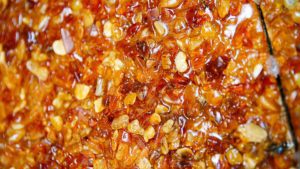
The Cabinet of Ministers of Ukraine intends in the next five years to increase the share of low cost air routes from Ukraine from 38% to 63%.
Such plans are contained in the government’s program (draft resolution No. 2186), posted on the parliament’s website.
According to the text of the program, for the specified period, the government intends to create conditions for a 60% increase in passenger traffic from Ukrainian airports from 20 million to 32 million people a year, as well as for increasing freight traffic from airports by 20%, from 94,000 tonnes to 112,000 tonnes per year.
In addition, the Cabinet also plans to stimulate the formation of an approximate average ticket price to the level of the average European indicator and increase the air mobility of the population by 10%, from 5% to 15%.
As reported, in January-August 2019 Ukrainian airlines transported about 9.226 million passengers, which is 10.7% more compared to the same period in 2018.

Kernel Holding S.A. (Luxembourg), the holding company of Ukraine’s Kernel agricultural and industrial group, plans to place $300-350 million eurobonds (loan participation notes, LPN), a source in banking circles has told Interfax-Ukraine.
The company intends to hold a conference call with investors on October 1, and meetings in London and New York on October 2. The organizers of the transaction are JP Morgan and ING.
Kernel plans to place either eurobonds with a maturity of five years and a call option after three years, or seven-year eurobonds with a call option after four years.
Kernel is the world’s largest producer and exporter of sunflower oil, the leading producer and supplier of agricultural goods from the Black Sea region to the world markets.

A bill which legalizes gambling in Ukraine was approved by the national government on September 29, according to a statement posted on the government’s website.
According to the bill, “gambling will be allowed exclusively on hotel premises through use of gambling equipment and software that comply with international standards.”
Seeking “de-criminalization of the economy,” Ukrainian President Volodymyr Zelensky tasked the government and the parliamentary majority with elaborating and adopting before December 1, 2019, laws legitimizing the gambling industry and amber production.

The Cabinet of Ministers at a meeting on September 29 approved a bill banning exports of raw amber, which foresees focusing of legal production on existing mining sites, Ukrainian Prime Minister Oleksiy Honcharuk has said.
“The main idea is to simultaneously comprehensively criminalize the illegal export of amber from Ukraine,” Honcharuk said at a press briefing on Monday.
The bill provides for a ban on the export of unprocessed amber (raw), criminalizes the illegal export of amber, and simplifies the procedure for obtaining official documents for the development of existing prospecting mining sites for legal business.
The bill will be submitted to the Verkhovna Rada in the near future, Honcharuk said.
In addition, the Cabinet of Ministers approved a bill on the legalization of gambling and will soon introduce it to the Rada.
“We want the slot machines to disappear from the streets… Yesterday we voted in favor of it. And in the near future it will be submitted to parliament,” Honcharuk said.

Estonia’s Skywalk Trading OÜ has asked Chairman of the Verkhovna Rada committee for energy and utilities Andriy Gerus and Head of the State Customs Service of Ukraine Maksym Nefyodov to interfere in the situation with locking a batch of diesel fuel made by Εlefsina refinery belonged to Hellenic Petroleum (Greece) at the Pivdenny seaport (earlier Yuzhny, Odesa region).
According to the text of Skywalk Trading’s letters to Gerus and Nefyodov, on August 25, 27,000 tonnes of diesel fuel was delivered to the seaport, which, after passing through all customs procedures, was shipped to port tanks in the customs warehouse mode. Later, on September 11, the State Customs Service of the State Fiscal Service (SFS) suspended the registering of fuel for analysis of sulfur content in it. On September 13, the company was refused to clear the batch due to exceeding the sulfur content requirement by 0.00001 percentage points.
So, according to the conclusion of the analysis of samples performed by the department of tax and customs examinations of the SFS, the sulfur content was 10.1 ppm (with a limit value of 10 ppm). This contradicts the quality certificate of the manufacturing refinery and the conclusions of international survey companies – Intertek, SGS and Saybolt. In accordance with their data obtained in the analysis of fuel during its discharge into tanks at the Pivdenny port, the sulfur content in the fuel varies between 9.4–9.6 ppm.
Despite the fact that the results of the analyzes of the SFS department contradict the manufacturer’s quality certificate and the conclusions of three international survey companies, and the recorded excess of the sulfur content is within the technical error of the device, the Energy Customs refused to re-analyze it and actually blocked 27,000 tonnes of fuel in reservoirs of the port,” the company said in the text of letters.
Skywalk Trading OÜ asked the officials, within their powers, to help resolve this situation, namely, to conduct a new sampling and research of diesel fuel from the Εlefsina refinery in any other state-owned laboratory with the involvement of international survey companies and any independent observers to ensure transparency and publicity of this process.